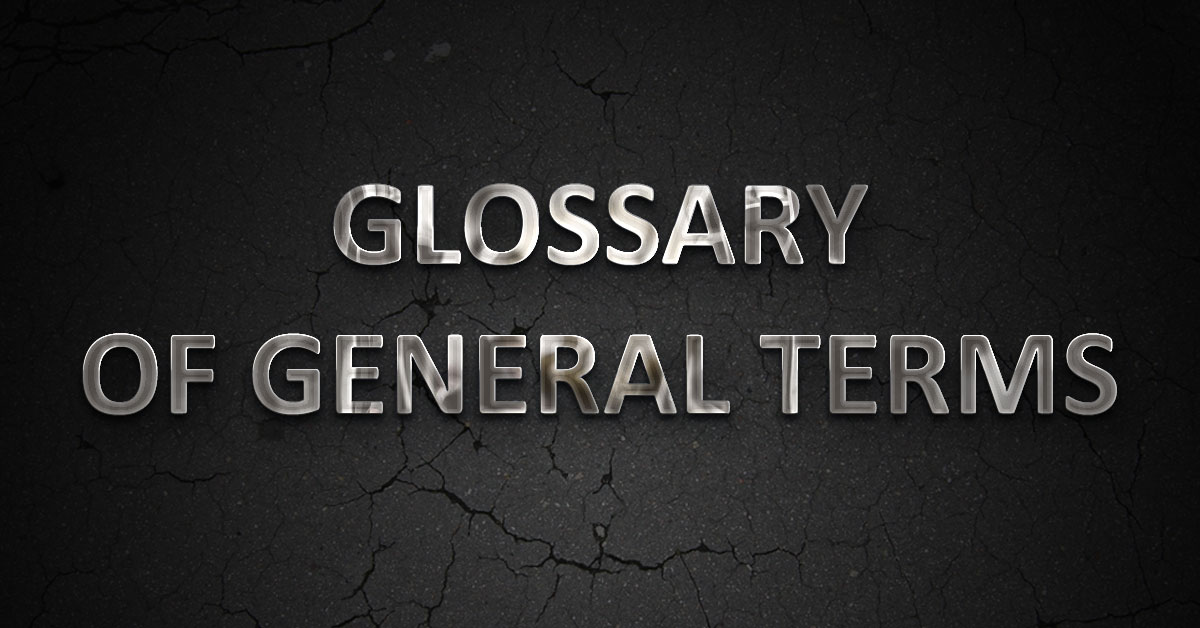Advice, Buying Guides, Glossary
Glossary Of General Knife Terminology
| Annodising | An electro-chemical coating altering appearance and improving texture. |
| Black Oxide | A coating used mostly on military knvies to avoid reflection. |
| Black or Grey Ti | A thin black or grey coating of titanium carbonitride, provides corrosion resistance. |
| Bolster | A piece of metal, generally nickel silver or stainless steel, that is located at one or both ends of a folding knife handle. |
| Button Lock | Found mainly on automatic knives, this type of lock uses a small push-button to open and release the blade. |
| Choil | A choil is a dip or cut out separating the cutting edge from the ricasso. It is also used to describe a cut out, molded or formed area where the handle and blade meet which positions/guards the index finger while gripping the opened knife. |
| Detent | A minute divot or dimple machined into the blade tang. A ball bearing drops into the detent hole when the knife is in the closed position, helping to hold the knife blade closed inside the handle. |
| Ergonomics | The applied science of equipment design intended to maximize productivity by reducing operator fatigue, safety, and discomfort. Knives which are designed to be comfortable and less fatiguing when used are labeled “ergonomic”. |
| Finger Choil | A purposeful and specific area/curve cut out between the blade and handle. It creates a grip position point closer to the cutting edge for better control while cutting. |
| Frame Lock | Also known as the integral lock or monolock, this locking mechanism works in a manner similar to the liner lock but uses a partial cutout of the actual knife handle, rather than a separate liner inside the handle to hold the blade in place. To close you simply move the frame out of the way and rotate the blade into the closed position. |
| Handguard | Protrusion/expansion on the knife’s handle proximal to the blade keeping the hand safely positioned on the handle inhibiting sliding forward. |
| Lanyard Hole | A small hole in a knife’s handle for threading through a cord/string as a backup attachment when using the knife around water or where it may be dropped and lost. |
| Liner Lock | The liner lock’s locking side liner is split from the top toward the bottom, similar to an automotive leaf spring (also called a lock bar) that when the blade is fully open will butt up against the tang of the blade to prevent the blade from closing. To release the lock, the user presses the lock bar back toward the handle side, at which time the blade is free to close. In the closed position the lock bar (leaf spring) rests alongside the handle and the blade. |
| Lockback | Also known as a spine lock, the lockback includes a pivoted latch affixed to a spring, and can be disengaged only by pressing the latch down to release the blade. |
| MOLLE | Modular Lightweight Load-carrying Equipment is the current system of loadbearing equipment based in the Pouch Attachment Ladder System (PALS) used by military and law enforcement. It consists of a grid of nylon webbing allowing the modular attachment of pouches and other equipment to achieve customized and mission-specific configurations. |
| Pommel | The knob or expansion found on the butt-end of a knife handle. |
| Quillion | A handguard protruding from both sides of the handle (where handle and blade meet) stopping the hand from slipping up onto the blade. |
| Ricasso | Unsharpened and thicker portion of the blade, just before the handle. Allows users to choke up on the blade for better control. |
| Scale | A knife handle made of scales or slabs of material that are riveted, screwed or bonded together. |
| Skeletonised Liners | Internal steel handle liners that are hollowed out (skeletonised). In removing sections of the steel, bulk and weight are reduced while allowing the liner to maintain its strength and rigidity. |
| Slip Joint | Non Locking Blade-a blade having a spring acting against it, which pro vides some resistance to its opening and closing as it pivots within the handle. |
| Spine Jimping | Small serrations, notching or texturing located on the spine of a blade where the hand or finger grips. Jimping creates tactile resistance, adds purchase, traction and slip resistance. |
| Swedge | Blade grind where a portion of the blade’s spine is removed to reduce weight, add style to a blade or both. |
| Tang | The portion of the blade where it connects to the handle. |
| Tip-Up/Tip-Down | Refers to which direction the folded knife is positioned by its pocket clip. When closed and clipped in a pocket, whichever direction (up or down) the blade’s tip sits defines if it is termed tip-up or tip-down. |
Credit to BTIBrands for this content.

